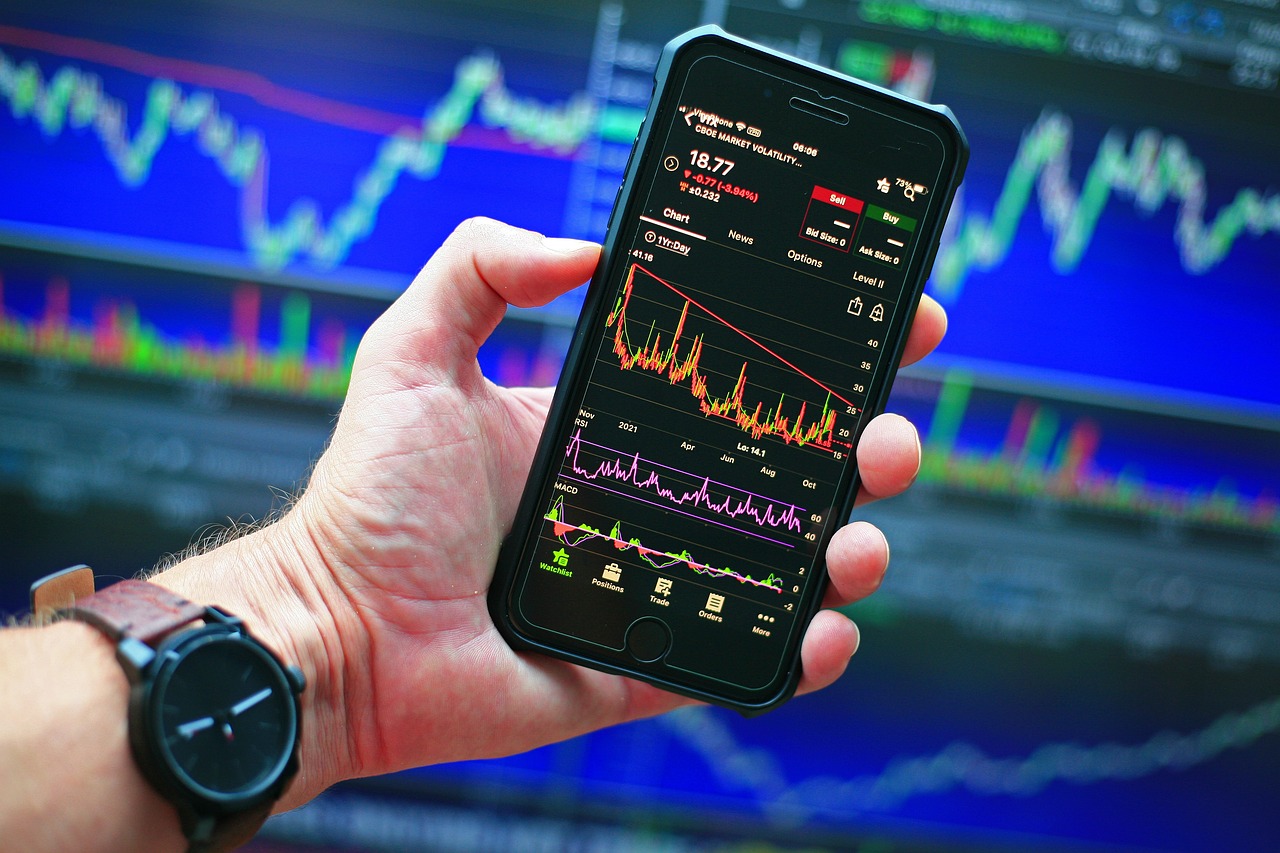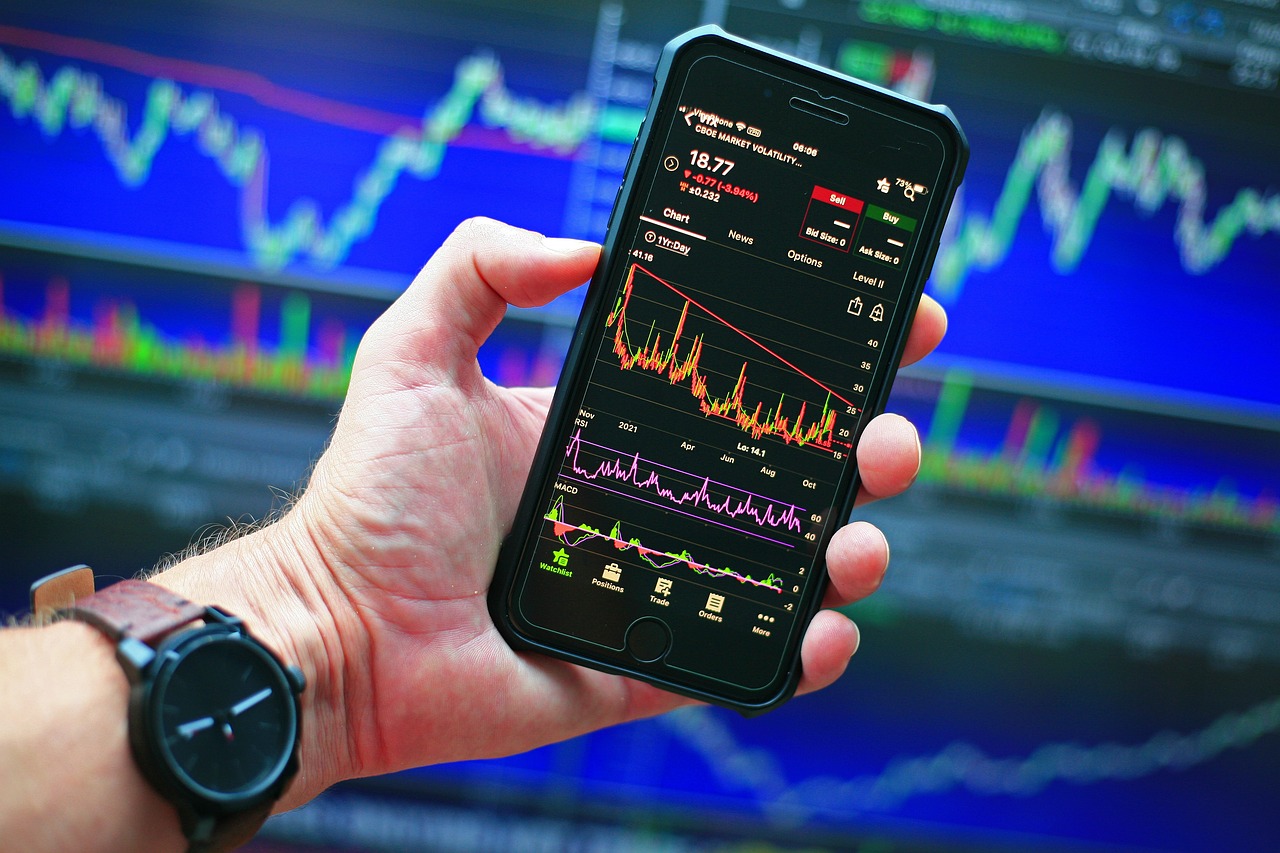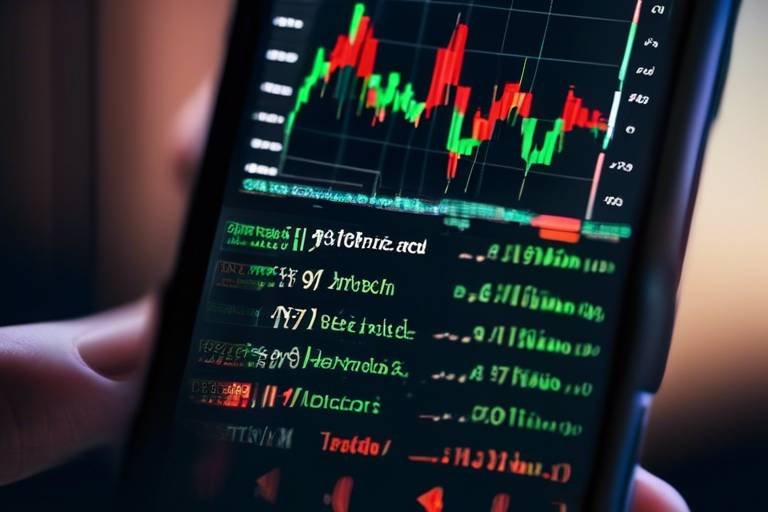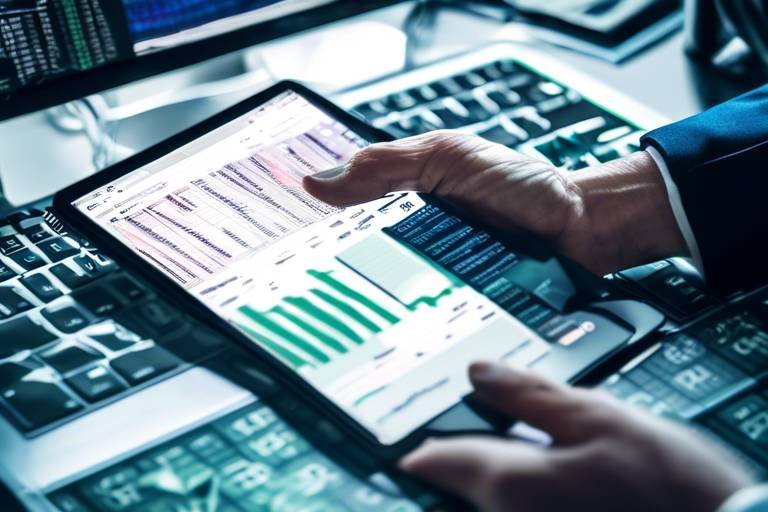Building Your Own Trading Algorithm for Crypto Markets
In the fast-paced world of cryptocurrency trading, having the right tools can make all the difference. Imagine being able to execute trades with the precision of a seasoned trader, but without the emotional rollercoaster that often comes with trading decisions. This is where building your own trading algorithm comes into play. By automating your trading strategies, you can enhance your efficiency and decision-making, allowing you to capitalize on market movements as they happen. But how do you get started? In this article, we will explore the essential steps, strategies, and considerations for developing a trading algorithm tailored specifically for the cryptocurrency markets.
Algorithmic trading is not just a buzzword; it's a powerful approach that utilizes computer programs to execute trades automatically based on predefined criteria. Think of it as having a personal trading assistant that never sleeps. This method allows traders to capitalize on market opportunities with remarkable speed and precision. With the cryptocurrency market being notoriously volatile, the ability to react swiftly can lead to significant gains—or losses. By leveraging algorithms, traders can set specific parameters that dictate when to buy or sell, effectively removing emotional biases from the equation.
Creating a successful trading algorithm is akin to crafting a fine recipe; it requires the right ingredients and a careful balance of various elements. The key components include:
- Market Data Analysis: The backbone of any trading algorithm, this involves analyzing historical and real-time data to inform your decisions.
- Entry and Exit Strategies: These strategies dictate when your algorithm will buy or sell, based on specific market signals.
- Risk Management: Essential for protecting your capital, this includes techniques like stop-loss orders and position sizing.
- Performance Evaluation: Regularly assessing the effectiveness of your algorithm ensures it remains relevant and profitable.
At the heart of algorithmic trading lies market data analysis. This process is fundamental as it helps identify trends, patterns, and potential trading signals that inform decision-making. By analyzing data, traders can spot opportunities that might not be immediately apparent. For example, if you notice a consistent upward trend in a particular cryptocurrency, your algorithm can be programmed to initiate a buy order when certain conditions are met.
When it comes to market data, there are several types that traders should consider:
- Price Data: Historical prices and current market prices provide insights into market behavior.
- Volume Data: Analyzing trading volume can indicate the strength of a price movement.
- Order Book Information: Understanding the order book helps traders gauge market depth and liquidity.
Utilizing reliable data sources and analytical tools is crucial for gathering accurate market information. Platforms like CoinMarketCap, CryptoCompare, and various trading APIs provide essential data that serves as the backbone for developing effective trading algorithms. Additionally, tools such as Python and R can be invaluable for data analysis and algorithm development.
Defining clear entry and exit strategies is vital for the performance of your trading algorithm. These parameters dictate when to buy or sell based on specific market conditions and signals. For instance, you might set your algorithm to buy when a cryptocurrency's price crosses above its 50-day moving average and sell when it drops below this threshold. This kind of systematic approach helps in making informed decisions rather than relying on gut feelings.
In trading, risk management is your safety net. Implementing techniques such as stop-loss orders and position sizing helps protect your capital and minimize losses. For example, a stop-loss order can automatically sell your assets when they fall to a certain price, preventing further losses. By ensuring that your algorithm incorporates these techniques, you can maintain the sustainability of your trading strategy over time.
Before you deploy your trading algorithm in live markets, it's crucial to backtest it using historical data. Backtesting allows traders to evaluate their algorithm's performance, providing insights into its effectiveness and potential profitability. Imagine testing your algorithm in a simulated environment, where you can see how it would have performed without risking real money. This step is essential for refining your strategy and boosting your confidence before diving into live trading.
Finally, regularly reviewing and optimizing your trading algorithm is crucial for adapting to changing market conditions. The cryptocurrency landscape is dynamic, and what works today may not work tomorrow. By continuously monitoring your algorithm's performance and making necessary adjustments, you can enhance its effectiveness and ensure long-term success in the competitive crypto trading landscape. Think of it as tuning a musical instrument; regular adjustments keep it sounding just right.
Q1: What programming languages are best for building a trading algorithm?
A1: Popular choices include Python, R, and C++. Python is often favored for its simplicity and extensive libraries.
Q2: How much data do I need to backtest my algorithm?
A2: Ideally, you should have several years of historical data to accurately assess your algorithm's performance across different market conditions.
Q3: Can I build a trading algorithm without coding skills?
A3: Yes, there are platforms that allow you to create algorithms using a visual interface without needing to code.

Understanding Algorithmic Trading
Algorithmic trading is like having a super-smart assistant who never sleeps, tirelessly scanning the market for opportunities while you catch some Z's. Imagine being able to execute trades at lightning speed, taking advantage of price discrepancies and market inefficiencies that a human trader might miss. This innovative approach leverages computer programs to automate trading decisions based on predefined criteria, making it a game-changer in the fast-paced world of cryptocurrency.
At its core, algorithmic trading allows traders to capitalize on market movements with speed and precision. Instead of staring at charts for hours, waiting for the perfect moment to buy or sell, you can set your algorithm to react instantly to market changes. This is particularly crucial in the crypto markets, where prices can swing wildly in a matter of seconds. Think of it as having a personal trading robot that never tires and always acts in your best interest!
But how does it work, you ask? Well, the magic lies in the algorithms themselves. These are complex mathematical formulas that analyze vast amounts of data to identify trading opportunities. They can be designed to follow various strategies, such as trend following, arbitrage, or market making. By programming your algorithm with specific rules and parameters, you can ensure it operates consistently and effectively, whether you're awake or asleep.
One of the key benefits of algorithmic trading is its ability to eliminate emotional decision-making. We all know how emotions can cloud judgment, especially in a market as volatile as cryptocurrency. With algorithms, trades are executed based on data and logic rather than fear or greed. This leads to more disciplined trading practices and can significantly improve your overall performance.
Moreover, algorithmic trading can handle multiple trades simultaneously, something that would be nearly impossible for a human trader. This capability allows for diversification, which is a crucial strategy in managing risk. By spreading your investments across different assets and strategies, you can protect yourself against adverse market movements.
However, it's essential to remember that algorithmic trading isn't a guaranteed path to riches. Like any tool, its effectiveness depends on how well it is designed and implemented. Poorly constructed algorithms can lead to significant losses, especially in the unpredictable world of cryptocurrencies. Therefore, investing time in understanding the underlying principles of algorithmic trading is vital for success.
In conclusion, algorithmic trading represents a powerful approach to navigating the complexities of the cryptocurrency markets. By harnessing the capabilities of technology, traders can enhance their efficiency, make informed decisions, and ultimately improve their trading outcomes. So, are you ready to dive into the world of algorithmic trading? With the right knowledge and tools, you can turn the tide in your favor!
- What is algorithmic trading? - Algorithmic trading is the use of computer programs to automate trading decisions based on predefined criteria.
- How does algorithmic trading benefit traders? - It allows for faster execution of trades, eliminates emotional decision-making, and can manage multiple trades simultaneously.
- Is algorithmic trading suitable for beginners? - While it offers many advantages, beginners should invest time in understanding the fundamentals before diving in.
- What are the risks associated with algorithmic trading? - Poorly designed algorithms can lead to significant losses, especially in volatile markets like cryptocurrency.

Key Components of a Trading Algorithm
Creating a successful trading algorithm isn't just about coding; it's about understanding the market and the components that drive it. At its core, a trading algorithm is a sophisticated blend of several essential elements that work together to make informed trading decisions. So, what are these key components? Let's dive into them!
The first component is market data analysis. This is the backbone of any trading algorithm. Without thorough analysis, your algorithm would be like a ship lost at sea, without direction. Market data analysis involves scrutinizing various types of data to uncover trends and patterns. Think of it as piecing together a puzzle; each data point is a piece that, when combined, reveals a complete picture of market behavior. Traders typically analyze:
- Price Data: Historical prices help identify trends.
- Volume Data: Understanding trading volumes can indicate the strength of a price movement.
- Order Book Data: This reveals the supply and demand dynamics at play.
Next, we have entry and exit strategies. These strategies are crucial because they define when the algorithm should enter or exit a trade. Think of them as the rules of engagement for your trading battles. A well-defined entry strategy might be triggered when specific market conditions are met, such as a breakout above a resistance level. Conversely, exit strategies could include taking profits at a certain percentage gain or cutting losses when a trade goes against you. Having clear rules helps eliminate emotional decision-making, which can often lead to costly mistakes.
Another vital component is risk management. This is where the rubber meets the road, as it ensures that your trading algorithm can withstand the unpredictable nature of the crypto markets. Effective risk management techniques, such as stop-loss orders and position sizing, are essential for protecting your capital. Imagine you're a tightrope walker; without a safety net (risk management), one misstep could lead to a disastrous fall. By implementing robust risk management strategies, you can minimize potential losses and maximize your chances of long-term success.
Lastly, we can't overlook performance evaluation. This component involves continuously monitoring and assessing how well your algorithm performs against its objectives. Just like a sports team reviews game footage to improve their strategy, you should backtest your algorithm using historical data to gauge its effectiveness. This process not only helps identify strengths and weaknesses but also provides valuable insights into how the algorithm can be optimized for better performance.
In summary, the key components of a trading algorithm—market data analysis, entry and exit strategies, risk management, and performance evaluation—work in harmony to create a robust trading system. By focusing on these elements, you can build an algorithm that not only reacts to market conditions but also thrives in the ever-evolving landscape of cryptocurrency trading.
Q1: What is the most important component of a trading algorithm?
A1: While all components are crucial, market data analysis is often considered the backbone, as it informs the algorithm's decisions.
Q2: How often should I backtest my trading algorithm?
A2: It's recommended to backtest your algorithm regularly, especially after making any significant changes or when market conditions shift dramatically.
Q3: Can I use existing trading strategies in my algorithm?
A3: Absolutely! Many successful algorithms are built upon established trading strategies, but it's essential to customize them to fit your specific market approach.

Market Data Analysis
When it comes to algorithmic trading, is the beating heart of your trading strategy. Imagine trying to navigate a bustling city without a map—confusing, right? That’s exactly how trading without proper analysis feels. By diving deep into the sea of market data, traders can uncover hidden trends, spot patterns, and identify potential trading signals that can significantly enhance decision-making. But what exactly does this entail?
First off, let’s break down the types of market data you’ll be dealing with. The three primary categories include price data, volume data, and order book data. Each type plays a unique role in shaping your algorithm:
- Price Data: This includes historical prices and current market prices. By analyzing price movements, traders can identify trends and reversals.
- Volume Data: Volume measures the number of assets traded. High trading volume often indicates strong interest and can validate price movements.
- Order Book Data: This provides insights into current buy and sell orders, helping traders gauge market sentiment and liquidity.
Now, let’s talk about the importance of data sources and tools. In the fast-paced world of cryptocurrency, having access to reliable data is crucial. You wouldn’t build a house on shaky ground, would you? Similarly, your trading algorithm needs a solid foundation of accurate and timely data. Some popular sources include:
| Data Source | Description |
|---|---|
| Cryptocurrency Exchanges | Platforms like Binance and Coinbase provide real-time price and volume data. |
| Market Data Aggregators | Services like CoinMarketCap compile data from multiple exchanges, offering a broader view of market trends. |
| API Services | Tools like Alpha Vantage or CryptoCompare allow for automated data retrieval and analysis. |
With the right data at your fingertips, you can start crafting your trading algorithm. But here’s the kicker: it’s not just about collecting data; it’s about interpreting it effectively. This means utilizing statistical analysis and machine learning techniques to extract actionable insights. Think of your algorithm as a detective, piecing together clues from the data to make informed decisions.
In summary, market data analysis is not merely a step in the algorithmic trading process; it’s a vital component that can make or break your trading success. By understanding the types of data available, utilizing reliable sources, and applying effective analytical techniques, you can create a robust trading algorithm that stands the test of time. Remember, in the world of crypto trading, knowledge is power, and the right data analysis can be your secret weapon.

Types of Market Data
When diving into the world of algorithmic trading, understanding the you can leverage is crucial. Think of market data as the lifeblood of your trading algorithm; without it, your strategies would be like a ship without a compass, lost in the vast ocean of cryptocurrency. There are several key types of market data that traders use to build robust algorithms:
- Price Data: This is the most fundamental type of data, representing the current and historical prices of cryptocurrencies. Price data can be further broken down into various forms, such as open, high, low, and close prices (OHLC). Analyzing price movements helps traders identify trends and make informed decisions.
- Volume Data: Volume data indicates how much of a particular cryptocurrency has been traded over a specific period. It provides insights into the strength of price movements; for example, a price increase accompanied by high volume may suggest a strong bullish trend.
- Order Book Data: The order book displays all buy and sell orders in the market, providing a snapshot of supply and demand. Understanding the depth of the order book can help traders gauge market sentiment and potential price movements.
- Market Sentiment Data: This type of data reflects the overall mood of the market participants. It can be gathered from various sources, including social media, news articles, and sentiment analysis tools. A positive sentiment might drive prices higher, while negative sentiment could lead to declines.
Utilizing these different types of market data allows traders to construct a well-rounded view of the market landscape. For instance, combining price and volume data can help identify breakout opportunities, while order book data can assist in determining optimal entry and exit points. It’s like assembling a puzzle; each piece of data contributes to the bigger picture of market behavior.
Moreover, integrating real-time data into your algorithm is essential, especially in the fast-paced world of cryptocurrency trading. Real-time data allows your algorithm to react swiftly to market changes, ensuring that you can capitalize on fleeting opportunities. Think of it as having a high-speed internet connection versus dial-up; the difference in speed can significantly impact your trading success.
In summary, the types of market data you choose to analyze will lay the foundation for your trading algorithm. By focusing on price, volume, order book, and market sentiment data, you can create a more effective and adaptable trading strategy. Just remember, in the world of crypto, data is your ally; the more you understand it, the better equipped you'll be to navigate the turbulent waters of the market.

Data Sources and Tools
When it comes to building a successful trading algorithm for the cryptocurrency markets, the importance of reliable data sources cannot be overstated. Think of your algorithm as a ship navigating through the vast ocean of market data; without a sturdy compass (i.e., accurate data), you risk getting lost or, worse, capsizing. The right data sources provide you with the necessary insights into market behavior, allowing your algorithm to make informed decisions.
There are several key types of data you should consider integrating into your trading algorithm:
- Price Data: This includes historical and real-time price movements of cryptocurrencies. Understanding price trends is crucial for identifying potential entry and exit points.
- Volume Data: Trading volume indicates the strength of a price movement. High volume often confirms trends, while low volume can signal potential reversals.
- Order Book Data: This data reveals the current buy and sell orders in the market, providing insights into market depth and liquidity.
To gather this data, you can utilize various tools and platforms that cater specifically to algorithmic trading. Some popular options include:
| Data Source | Description | Key Features |
|---|---|---|
| CoinMarketCap | A comprehensive cryptocurrency market data platform. | Real-time pricing, historical data, and market capitalization. |
| CryptoCompare | Offers a wide range of cryptocurrency data and analytics. | Price, volume, and order book data across multiple exchanges. |
| TradingView | A social network for traders with advanced charting tools. | Customizable charts, technical analysis tools, and community insights. |
Moreover, you can enhance your trading strategy by leveraging programming languages like Python or R to analyze data and build your algorithms. Libraries such as Pandas for data manipulation and NumPy for numerical analysis can be instrumental in processing market data efficiently.
In addition, APIs (Application Programming Interfaces) provided by various exchanges allow you to access real-time data directly into your trading algorithm. For example, Binance and Coinbase offer APIs that can be integrated into your code, enabling seamless data flow and execution of trades in response to market conditions.
In conclusion, the selection of data sources and tools is a critical step in developing a robust trading algorithm. By ensuring that you have access to accurate, real-time data and leveraging the right analytical tools, you can significantly enhance your algorithm's performance and increase your chances of success in the volatile world of cryptocurrency trading.
Q: What is the best data source for crypto trading algorithms?
A: The best data source depends on your specific needs, but platforms like CoinMarketCap and CryptoCompare are widely regarded for their comprehensive data offerings.
Q: Can I use free tools for building my trading algorithm?
A: Yes, many free tools and libraries are available, such as Python and R, which can help you analyze data and develop your algorithm without incurring costs.
Q: How often should I update my data sources?
A: It's advisable to use real-time data for live trading and to regularly review historical data to refine your algorithm and strategies.

Entry and Exit Strategies
When it comes to algorithmic trading, defining clear is not just important; it's absolutely vital. Think of these strategies as the compass guiding your trading journey. Without a well-defined path, you might find yourself lost in the vast ocean of cryptocurrency markets, where volatility reigns supreme. So, what exactly do we mean by entry and exit strategies?
In simple terms, an entry strategy dictates when to buy a particular cryptocurrency, while an exit strategy outlines when to sell. These strategies are based on specific market conditions and signals that your algorithm will analyze. For instance, you might decide to enter a trade when the price breaks above a particular resistance level or when a moving average crossover occurs. Conversely, your exit strategy could involve selling when a specific profit target is reached or when a stop-loss condition is triggered. The beauty of these strategies lies in their ability to automate decision-making, significantly reducing the emotional stress that often accompanies trading.
To help you visualize how these strategies can be structured, consider the following table that outlines common entry and exit signals:
| Type | Entry Signal | Exit Signal |
|---|---|---|
| Trend Following | Buy when the price crosses above the 50-day moving average | Sell when the price crosses below the 50-day moving average |
| Breakout | Buy when the price breaks above resistance | Sell when the price falls below support |
| Mean Reversion | Buy when the price is significantly below the moving average | Sell when the price is significantly above the moving average |
Now, while it might be tempting to rely on just one strategy, the most successful traders often employ a combination of strategies tailored to their trading style and risk tolerance. This multifaceted approach allows for greater flexibility and adaptability in the face of market fluctuations. But don't forget, the key to success in any strategy is backtesting. This means you should rigorously test your strategies against historical data to ensure they perform well before putting real money on the line.
Another crucial aspect of entry and exit strategies is the incorporation of risk management techniques. For instance, you should consider how much capital you are willing to risk on each trade. Setting a maximum percentage of your capital that you are willing to lose on a single trade can help you manage your overall risk effectively. This way, even if some trades go against you, your capital remains intact for future opportunities.
In summary, having well-defined entry and exit strategies is like having a safety net in the unpredictable world of cryptocurrency trading. These strategies not only help in making informed decisions but also provide a structured approach that can enhance your trading performance over time. So, take the time to craft these strategies carefully, and remember: the more precise your entry and exit points, the better your chances of navigating the crypto markets successfully.
- What is the importance of entry and exit strategies in trading? Entry and exit strategies are crucial as they provide a structured approach to making trading decisions, helping to minimize emotional trading and maximize potential profits.
- How can I develop my own entry and exit strategies? Start by analyzing market conditions, historical data, and your risk tolerance. Test different strategies through backtesting to find what works best for you.
- What role does risk management play in trading? Risk management techniques, such as setting stop-loss orders and determining position sizes, help protect your capital and ensure long-term trading sustainability.

Risk Management Techniques
In the fast-paced world of cryptocurrency trading, risk management is not just an option—it's a necessity. Imagine driving a car without brakes; it might be thrilling at first, but the inevitable crash is just around the corner. Similarly, without effective risk management techniques, traders can find themselves facing significant losses that could wipe out their capital. So, what are the essential strategies to safeguard your investments and ensure longevity in the crypto markets?
One of the most fundamental techniques is the use of stop-loss orders. A stop-loss order is like a safety net that automatically sells your assets when they reach a certain price, thus limiting your losses. For instance, if you purchase Bitcoin at $40,000 and set a stop-loss order at $37,000, your position will be sold if the price drops to that level. This simple yet powerful tool can prevent minor losses from spiraling into major setbacks.
Another critical aspect of risk management is position sizing. This involves determining how much of your capital you're willing to risk on a single trade. A common rule of thumb is to risk no more than 1-2% of your total trading capital on any given trade. By adhering to this principle, you can withstand a series of losses without jeopardizing your overall trading account. For example, if you have a $10,000 trading account, risking 2% means you would only risk $200 on a single trade. This approach is akin to diversifying your investments—spreading your risk across multiple trades instead of putting all your eggs in one basket.
Additionally, employing diversification can significantly reduce risk. By investing in a variety of cryptocurrencies rather than concentrating your funds in one or two, you can mitigate the impact of a poor-performing asset. Think of it as a buffet versus a single dish; having a variety of options allows you to enjoy your meal even if one dish doesn't suit your taste.
To further enhance your risk management strategy, consider implementing a trailing stop. This technique allows you to lock in profits as the price of an asset rises while still providing a safety net. For example, if you set a trailing stop of $500 on a Bitcoin position that has risen from $40,000 to $45,000, your stop will move up with the price. If Bitcoin then falls to $44,500, your position will automatically sell, securing a profit while protecting you from a sudden downturn.
Lastly, it's crucial to regularly review and adjust your risk management strategies. The cryptocurrency market is incredibly volatile, and what works today might not be effective tomorrow. Keep an eye on market trends, analyze your past trades, and be willing to adapt your strategies as needed. This continuous improvement mindset is key to thriving in the ever-evolving crypto landscape.
In summary, effective risk management techniques are essential for anyone looking to navigate the complexities of cryptocurrency trading successfully. By utilizing stop-loss orders, position sizing, diversification, trailing stops, and regularly reviewing your strategies, you can significantly enhance your chances of long-term success. Remember, the goal isn't just to make money—it's to protect what you've earned while maximizing your opportunities.
- What is a stop-loss order? A stop-loss order is an automatic order to sell a security when it reaches a certain price, helping to prevent significant losses.
- How much of my capital should I risk on a single trade? It's generally advised to risk no more than 1-2% of your total trading capital on any single trade.
- What is position sizing? Position sizing refers to the amount of capital you allocate to a specific trade, which is crucial for managing risk.
- How can diversification help in trading? Diversification spreads your investments across multiple assets, reducing the impact of a poor-performing asset on your overall portfolio.
- Why is it important to review risk management strategies? Regular reviews help you adapt to changing market conditions and improve your trading performance over time.

Backtesting Your Algorithm
Backtesting is like a time machine for traders; it allows you to travel back to the past and see how your trading algorithm would have performed under real market conditions. Imagine being able to test your strategies on historical data without the risk of losing a single penny! This step is crucial because it provides insights into the effectiveness and potential profitability of your algorithm before you take the plunge into live trading.
To effectively backtest your algorithm, you need to gather historical market data that reflects the conditions in which you plan to trade. This data includes price movements, volume changes, and other relevant indicators. Think of it as collecting ingredients for a recipe; the quality and relevance of your data will determine how well your algorithm performs. The more comprehensive your dataset, the better your backtest results will be.
Once you have your data, you can run simulations to see how your algorithm would have reacted to various market scenarios. This process involves applying your trading rules to the historical data and tracking the outcomes. Did your algorithm buy when it should have? Did it sell at the right time? These questions are essential for evaluating your strategy's strengths and weaknesses.
When conducting backtests, it’s important to consider various factors that could affect performance, such as:
- Market Regimes: Different market conditions (bullish, bearish, sideways) can drastically influence trading outcomes.
- Transaction Costs: Failing to account for trading fees can paint an overly optimistic picture of your algorithm's profitability.
- Slippage: This refers to the difference between the expected price of a trade and the actual price. It can occur during volatile market conditions.
After running your backtests, it's time for analysis. You'll want to assess key performance metrics, such as:
| Metric | Description |
|---|---|
| Profit Factor | The ratio of gross profit to gross loss, indicating the potential profitability of your algorithm. |
| Maximum Drawdown | The largest drop from a peak to a trough in your portfolio value, helping you understand risk. |
| Win Rate | The percentage of profitable trades, giving insight into the reliability of your strategy. |
By analyzing these metrics, you can identify areas for improvement. Maybe your algorithm performs well in a bullish market but struggles in a bearish one. This insight allows you to tweak your strategy, making it more adaptable to changing market conditions.
Another vital aspect of backtesting is to avoid overfitting. This occurs when your algorithm is too finely tuned to historical data, making it less effective in real-time trading. It's akin to trying to fit a square peg into a round hole; what works in theory may not hold up in practice. To combat this, ensure that your algorithm is robust enough to handle various market scenarios without being overly complex.
In conclusion, backtesting your trading algorithm is not just a step in the development process; it's a crucial phase that can significantly influence your trading success. By understanding how your algorithm would have performed in the past, you can make informed decisions and adjustments, paving the way for a more successful trading journey in the volatile world of cryptocurrencies.
- What is backtesting? Backtesting is the process of testing a trading algorithm on historical data to evaluate its performance.
- Why is backtesting important? It helps traders understand how their algorithm would have performed in the past, allowing them to make necessary adjustments before live trading.
- What data do I need for backtesting? You need historical market data, including price movements, volume, and other relevant indicators.
- What are some common pitfalls in backtesting? Common pitfalls include overfitting, ignoring transaction costs, and not accounting for slippage.

Continuous Improvement and Optimization
In the ever-evolving world of cryptocurrency trading, the phrase "adapt or die" couldn't be more relevant. As market dynamics shift, so too must your trading algorithm. Continuous improvement and optimization are not just buzzwords; they are essential practices that can significantly enhance the performance of your trading strategy. Just like a gardener who regularly tends to their plants, pruning and nurturing them for optimal growth, you must consistently refine your algorithm to ensure it thrives in the competitive landscape of crypto trading.
One of the most effective ways to achieve continuous improvement is through data analysis. Regularly analyzing your algorithm's performance metrics can reveal insights that guide your optimization efforts. For instance, you might find that certain market conditions yield better results than others. By identifying these patterns, you can adjust your entry and exit strategies accordingly. This process is akin to a detective piecing together clues to solve a mystery; every bit of data can lead you closer to a more refined trading approach.
Moreover, staying updated with the latest market trends and technological advancements is crucial. The cryptocurrency market is notorious for its volatility and rapid changes, which means that what worked yesterday might not work today. Incorporating machine learning techniques into your algorithm can provide a significant edge. With machine learning, your algorithm can learn from past trades, adapt to new information, and even predict future market movements based on historical data. Think of it as teaching your algorithm to think on its feet, making it more resilient and responsive to market changes.
Another key aspect of continuous improvement is backtesting. Regular backtesting using updated historical data allows you to evaluate how your algorithm would have performed under different market conditions. By simulating various scenarios, you can identify weaknesses and areas for enhancement. This process is similar to a sports team reviewing game footage to analyze performance and make strategic adjustments for future matches.
It's also vital to set up a feedback loop. By creating a system where you regularly review your algorithm's performance and gather insights from your trading experiences, you can make informed decisions about necessary adjustments. This could involve tweaking parameters, altering risk management strategies, or even integrating new indicators. Remember, the goal is to create a self-improving system that evolves with the market.
Lastly, consider collaborating with other traders or joining trading communities. Sharing insights, strategies, and experiences can provide fresh perspectives that might inspire new optimization techniques for your algorithm. Think of it as a brainstorming session where the collective knowledge can lead to groundbreaking ideas that you might not have considered on your own.
In conclusion, the journey of continuous improvement and optimization is ongoing. By embracing a mindset of adaptability and innovation, you can ensure that your trading algorithm not only survives but thrives in the competitive world of cryptocurrency trading. Remember, the market is always changing, and so should your approach to trading!
- What is the importance of continuous improvement in trading algorithms? Continuous improvement helps traders adapt to market changes, enhance performance, and maintain competitiveness.
- How often should I backtest my trading algorithm? Regular backtesting is recommended, especially after significant market changes or after implementing new strategies.
- Can machine learning really improve my trading algorithm? Yes, machine learning can help your algorithm learn from past data and adapt to new market conditions, increasing its effectiveness.
- What are some common mistakes to avoid when optimizing a trading algorithm? Common mistakes include overfitting to historical data, ignoring market changes, and failing to review performance regularly.
Frequently Asked Questions
- What is algorithmic trading?
Algorithmic trading is the process of using computer programs to execute trades automatically based on specific criteria. This approach allows traders to take advantage of market opportunities quickly and efficiently, making decisions based on data rather than emotions.
- What are the key components of a trading algorithm?
A successful trading algorithm consists of several crucial elements, including market data analysis, entry and exit strategies, risk management techniques, and performance evaluation. Each of these components plays a vital role in ensuring the algorithm operates effectively and meets trading objectives.
- How important is market data analysis?
Market data analysis is fundamental to algorithmic trading. It helps traders identify trends, patterns, and potential trading signals that inform their decision-making. Without thorough analysis, the algorithm may miss critical opportunities or make poor trading choices.
- What types of market data should I consider?
When building a trading algorithm, you should consider various types of market data, including price, volume, and order book information. Each of these data types provides unique insights into market behavior, helping you create a more robust trading strategy.
- How do I backtest my trading algorithm?
Backtesting involves evaluating your algorithm's performance using historical market data. This process allows you to see how the algorithm would have performed in the past, helping you identify its strengths and weaknesses before deploying it in live markets.
- What are some risk management techniques I should implement?
Effective risk management techniques include using stop-loss orders, position sizing, and diversification. These strategies help protect your capital and minimize potential losses, ensuring your trading algorithm remains sustainable over time.
- How can I continuously improve my trading algorithm?
Regularly reviewing and optimizing your trading algorithm is essential for adapting to changing market conditions. This means analyzing its performance, making necessary adjustments, and testing new strategies to enhance its effectiveness and profitability.



















